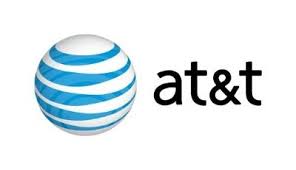 It’s been quite exciting to see recent developments in Telecom India. With recent successful (?) spectrum auctions & amid ranging debate over acquiring spectrum (band of frequencies) in 900 & 1800 MHz band by incumbents & new entrants, one thing is clear- the market is more serious now towards impending battle & we are already set on to a very exciting phase of Indian Telecom Industry. Let’s call this as Phase-II.
It’s been quite exciting to see recent developments in Telecom India. With recent successful (?) spectrum auctions & amid ranging debate over acquiring spectrum (band of frequencies) in 900 & 1800 MHz band by incumbents & new entrants, one thing is clear- the market is more serious now towards impending battle & we are already set on to a very exciting phase of Indian Telecom Industry. Let’s call this as Phase-II.
Let’s not talk about money spent or what would happen to tariffs in coming months. BTW, raising tariffs is not the ONLY way for telcos to recover money spent on auctions, albeit it’s sure-shot way.
The auction held on 3rd Feb, which lasted more than 10 days, was historic with re-entry of new entrant Reliance Jio, a new player in the market, who also bought PAN India spectrum for LTE/4G (2.3-2.4GHz) services in year 2010. We didn’t get to see anything from Reliance Jio in past 3 years, but with the recent auction & winning of spectrum in some of the key circles in 1800 MHz band, Jio would likely to expedite its launch of services. Now would it be only 2G/3G or 4G or mix of all is not yet clear, but certainly, you can’t launch PAN India LTE without Voice support, which still brings 75-85{af589cdba9d77786c8c861317dbad60bba1e2ebbf56e2ffab874a1b59fde9ce3} of revenues for telcos in India. Jio must be bringing something unique to market or it would at least add fire to existing tariff wars, to start with.
Other incumbents, barring Airtel, including Idea Cellular & Vodafone, who also won bids in 1800 MHz band for some of the key telecom circles, could either opt for augmenting spectrum to already launched services in 2G/3G to relieve congestion or could launch FDD LTE (4G) Services in select cities in those circles. For readers who are new to discussion can refer here for more understanding of terminologies.
If you look at the auctions held in year 2010 for 3G & BWA (4G/LTE-WiMaX) and the recent auctions for 900/1800 MHz band, the combined money spent by all telcos is far more than what could be expected as RoI after launch of services. After all winning spectrum is just the beginning, which is followed by network roll-out & services, and expanding the reach of those services once initial roll-out is over. It takes huge amount of CAPEX to launch services in terms of building new towers, buying network equipments & expanding bandwidth by adding capacity to existing or new network.
Incumbents like Airtel, who already have PAN India 2G (GSM) & select circle 3G network, along with select cities 4G (LTE) network, the spectrum won in recent auctions would pave way for expanding those services to new cities & augmenting services in existing network, wherever required. The only problem telco faced is lack of devices ecosystem support for 4G/LTE, who recently launched 4G Services on iPhone 5S in Bangalore, to reach more subscribers, rather than relying on only 4G USB Dongles. It could replicate the strategy in other 4G cities like Pune, Kolkata & Delhi-NCR soon. The trials of Voice over 4G (VoLTE) were going on in Pune and we would like to see successful voice calling on 4G network soon.
Understand the issue here. We already got very mature omnipresent 2G (GSM-Voice) dominated network by majority of telecom players. On top of that, these players (Airtel, Vodafone, Idea, Tata, RCom, Aircel) have launched 3G Network by either launching new telecom sites or co-locating to existing 2G Sites in major towns. So now at the moment, you get 2G Network anywhere, 3G is intermittently available. Both networks are backed by very mature devices ecosystem, where subscribers can choose any decent devices to either latch on to 2G or 3G or both at any point of time.
With advent of 4G services (Reliance Jio, Airtel, Vodafone & Idea), which are predominantly focused on data usage of users (no Voice calling please), telecom operators got lots of roadblocks to overcome. First, which band to choose for 4G services, as there are at least 30+ discrete bands allotted to 4G services globally. Second, more frequency band support requires more costly & different devices to support on network. Imagine, you buy Apple iPhone 5S and found that it doesn’t support some of the TDD or FDD LTE bands in some countries including India. How do telcos ensure safe passage to 4G rollout from subscriber’s perspective?
Existing 4G/LTE (BWA) spectrum allotted in year 2010 was in 2.3-2.4 GHz band (which is TDD LTE band 40). Airtel, Aircel, Jio & Tikona need to roll-out TDD LTE services over this band to start with. But at moment, barring some leading device makers including Apple, Samsung & LG, we have few devices supporting the services on this band (iPhone 5S is one example), which are again costly devices. This poses a new challenge to telcos strategy for wide-spread adoption of 4G/LTE Services by subscribers.
Now other option is to launch 4G FDD LTE (1800 MHz band) quickly. Telcos, including Idea Cellular, Vodafone, Airtel & Reliance Jio, could think of launching services here. The benefits are many here. First, 1800 MHz band is the most popular band of LTE launches globally with more 480 new devices supported (and its growing) with 117 new networks launching services in this band. From Telecom operator & its subscriber’s perspective this is good news. This would also lead to efficient roaming agreements globally among telcos & subscribers don’t have to change their devices while roaming on 4G services globally.
As 4G services remain out of reach till the tipping point is reached for mass adoption, majority of telcos would be happy to rely on existing 2G-3G services (mass revenue) and launching LTE/4G in only select cities and later on expanding reach. Except Reliance Jio, this strategy suits perfectly for other telcos, by launching LTE/4G in 2.3 or 1.8 GHz band or both. Telcos, could adopt the strategy of LTE devices subsidy (like their Western Counterparts) to quick adoption of services, but except RCom no-one has yet shown interest to this logic.
For Reliance Jio, I don’t see PAN India 4G roll-out of services as good starting point for two good reasons. First, lack of voice support & second lack of devices (price range). So Jio might adopt to roll-out 2G or 3G services on 1800 MHz band (which it won in recent auctions), & by launching 4G (TDD LTE) in select circles/cities like Mumbai/Delhi (PAN India spectrum), with devices subsidy for 4G/3G devices.
Other option for Jio would be to launch FDD LTE Services in 1800 MHz band, along with TDD LTE 2.3 GHz Services by support of Voice over LTE services, but that would be costly mistake as Jio subscribers might have to rely on competitor’s network for voice calling in many instances. Jio can’t ignore option of launching either 2G/3G services for voice calling to start with and then moving ahead with 4G launch as it would be win-win strategy in long run to support voice calling over network, rather than just launching network for data services.
Telcos in India are opting out roll-out of non-standard services like Wi-Fi to offload some of the data uptake in select cities. This would combine to their existing strategy of launching 4G services. Wi-Fi offers the benefit of mature (& cheaper) devices ecosystem with guaranteed data rates of 5-20 Mbps for static locations. With advent of new high speed Wi-Fi standards including 802.11ac/ad & 802.11u (Hotspot 2.0), Wi-Fi would continue to bring money for telcos by little investments into ecosystem. We do see in coming years, Wi-Fi is likely to co-exist with other 2G/3G/4G Cellular Systems and would only help subscribers to surf data at their office/hotspots/homes.
The major challenges with Wi-Fi are interference, security & inter-working with Cellular Network. But as mentioned earlier, OEMs like Ruckus, Cisco & others have developed new tools/techniques to thwarts of the issues pertaining to Wi-Fi. The inter-working (smooth hand-off of your Wi-Fi session to 3G/4G without interruption of services) is still in nascent phase, but likely to see things moving forward in next 3-4 years (3GPP Rel 12).
Over the years, globally (and India of course), we would continue to use 2G (GSM) for voice calling and either 3G or 4G or Wi-Fi for data and all these technologies would co-exist as part of telecom operator’s big challenge of managing complete heterogeneous network. Other challenge would be the provision of bandwidth pipes reaching to your homes, offices or nearby towers, carrying petabytes of data from one location to another. OTT players (Whatsapp, LINE) would continue their strides by eating SMS revenues and users would enjoy seamless network, without knowledge of the back-end technologies.
Telcos, who earlier launched their network with CDMA technologies, including RCom, MTS & Tata would continue to stick to it for roll-out or upgrade it to LTE at later stage. This looks similar to the GSM Operator’s strategy to upgrade of network from 2G/3G to LTE, albeit with some differences in up-gradation path. Some of these telcos have successfully adopted Wi-Fi to their network portfolio and as all of them stayed away from buying more spectrums in recent launches; CDMA would continue to support Voice & Data services in coming year, till LTE makes in-roads.
Most of the today’s 3G network has now moved on to 3G+/3.5G or HSPA (High Speed Packet Access), which guarantees download speeds of 21 Mbps & upload of 5-10 Mbps. Some of the telcos might stick to HSPA for long time rather than quickly migrating to LTE (Idea or Voda), till they see real traction for LTE Services catching up. The path to migrate from HSPA to LTE is quite safe & buying out time would be necessary till devices ecosystem for 4G/LTE matures for mass adoption. I would be more than happy, if some telcos stick to this route , as it’s safest (in terms of investment) & guarantees the least issues of network migration from telco & users point of view. Although your favorite HSPA (3G) smartphone might not support 4G speeds (read device specs before buying), you could choose to stick to 3G till 4G tipping point has reached at lower costs.
To manage the heterogeneous network, including 2G/3G/4G/Wi-Fi/CDMA, telcos need smart tools & techniques to efficiently track operational issues at lowest level cost efficiently. Technologies like SDN, NFV, Cloud & SON would make things little better over years by automating some key aspects of network management & configuration along with easy fault finding with least manual intervention. Some of industry innovations like Small Cells or Small base stations would be key to roll-out of new technologies, but we are yet to see things on ground. Moreover, discrete bands of 4G/LTE require Smartphone makers to launch multiple versions of same devices supporting various LTE/4G bands, which would lead to more devices on network than users. This creates signalling overload (Signalling messages are used to setup call or data session during device in Idle state) on network causing degradation of capacity.
Mergers & Acquisition would be challenging, due to some regulatory concerns over payment of fees over acquired spectrum, industry would be happy to see developments in long run. Lesser the competition, more would be the revenue. Some of industry players like Telewings ( earlier Uninor) & Aircel would stick to growing their existing circle subscriber base, but likely to be taken over by others.
Auction of some other bands, including 700 MHz, might draw some interest by existing players, but given the appetite to sustain, few of them either drop out of bidding or try out spectrum re-farming route to take care of their existing investments into network.
The day is not far, where users would enjoy seamless, uninterrupted voice calls or watch YouTube movies on moving trains or tele-workers making Video conference calls on the go, anytime-anywhere. We are going to see it in reality soon!





